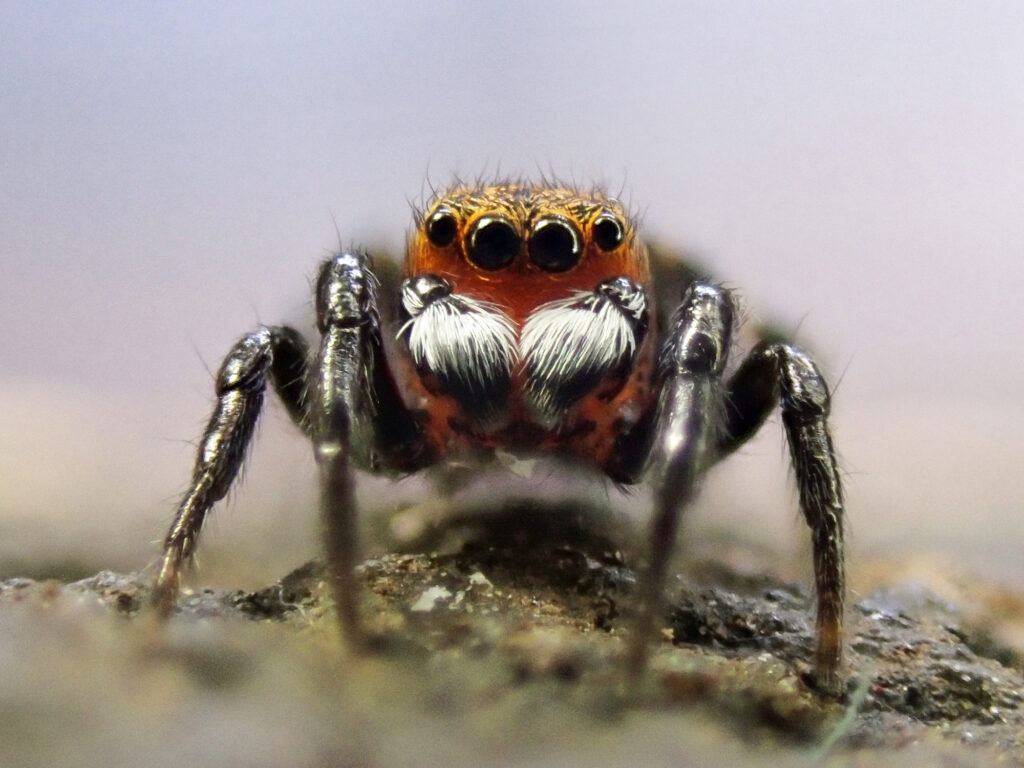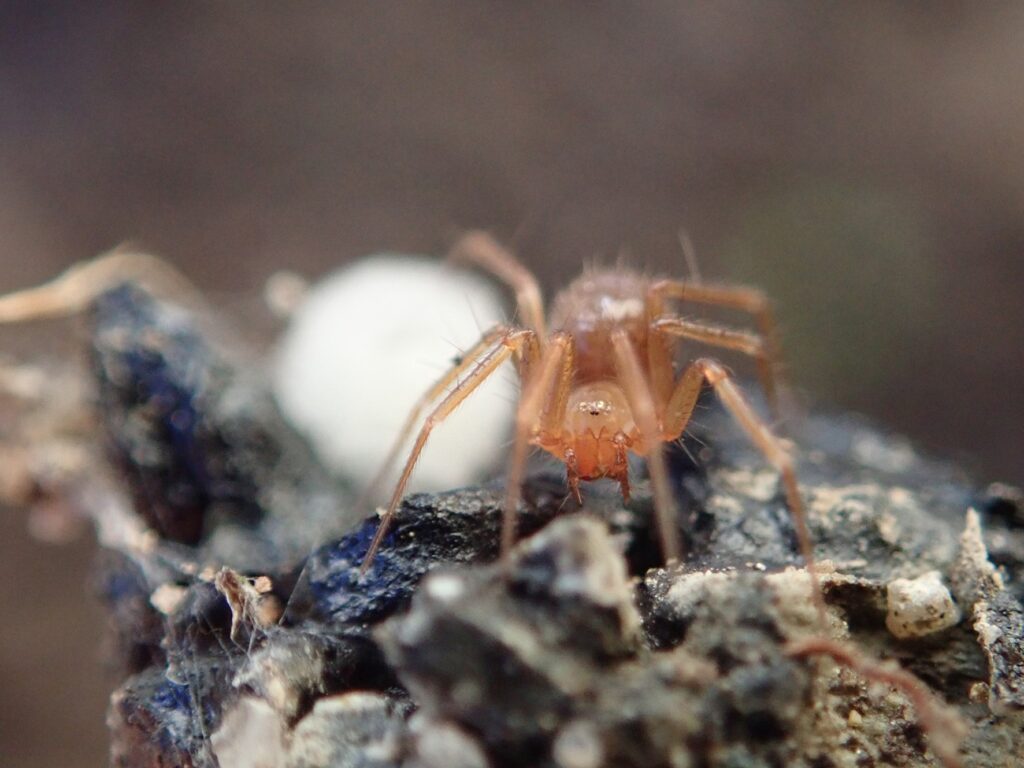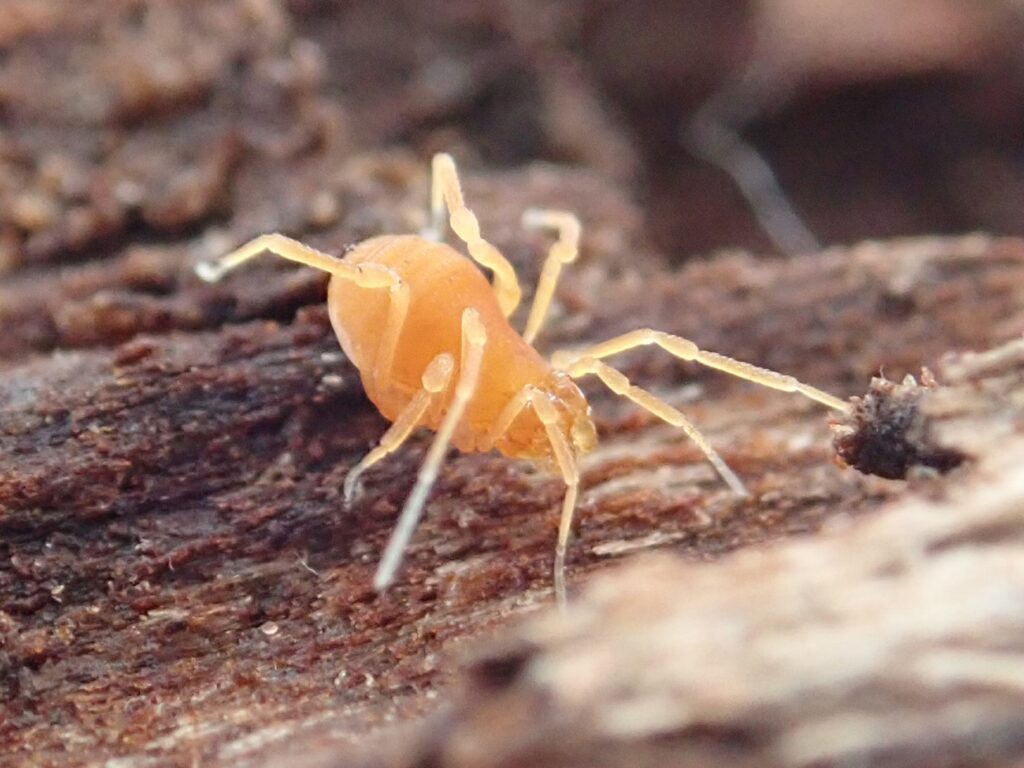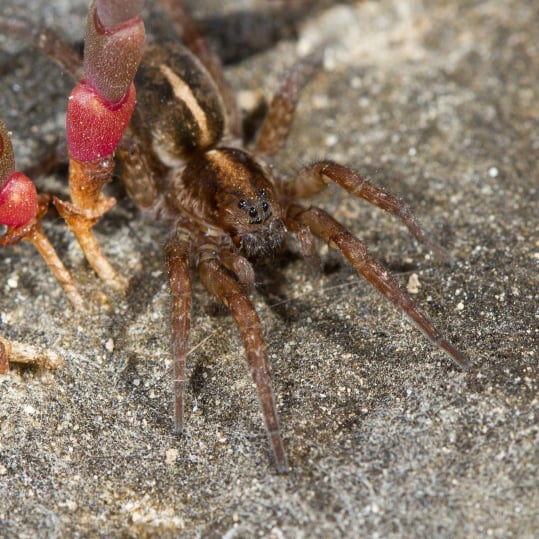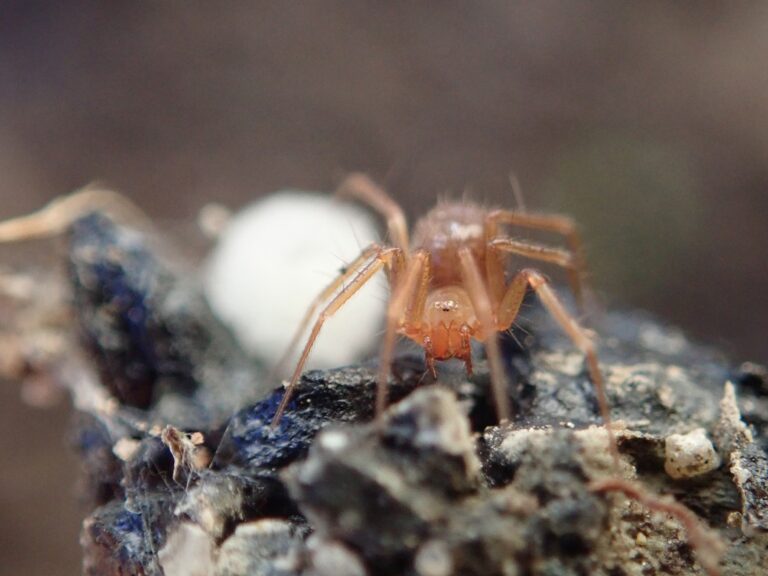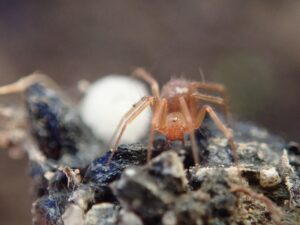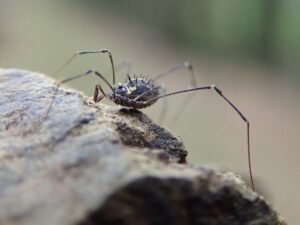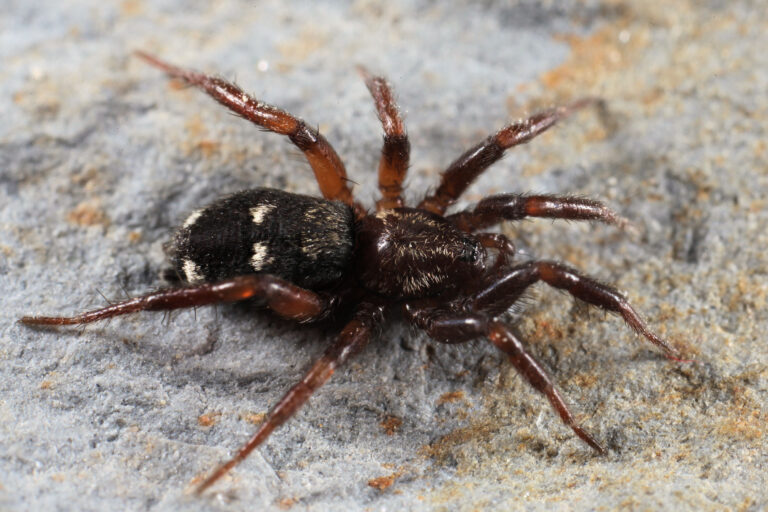Spiders and harvestmen are arachnids, an ancient group of creatures with ancestors that lived more than 420 million years ago. Unlike insects, arachnids have four pairs of legs instead of three, simple rather than compound eyes, and no antennae or wings. Spiders differ from harvestmen by having two distinct body segments rather than one, and by the production of silk. This is woven to make webs which entangle prey, and spiders also use silk to construct retreats, for the protection of eggs, and to disperse on air currents.
Arachnids eat insects they help control species which damage crops or spread disease. They are also an important food source for birds, mammals, amphibians and reptiles.
Devon’s spiders and harvestmen can be found almost everywhere, from the coast to high moorland, in gardens and in our homes. Numbers vary widely according to habitat, but it has been estimated that there can be up to 800 spiders per square metre in uncut grassland. These all need:
Food: Spiders are carnivores that feed on live invertebrates which are immobilised with venom and consumed by sucking up liquid nutrients. Harvestmen have chewing mouthparts and so can eat live and dead invertebrates, as well as decaying plant matter.
Shelter: Spiders and harvestmen hide from predators and build webs or retreats amongst vegetation, in trees, under rocks, or inside buildings.
Currently around 680 species of spider and 30 harvestmen are found in the UK. Over 450 of these have been recorded in Devon and 29 are listed as Devon Species of Conservation Concern. Those identified as Devon Special SpeciesDevon Species of Conservation Concern which have been 'shortlisted' as needing particular action or attention (rather than being iconic species). More are discussed below.
Key pressures and opportunities
Species in this group have varying requirements and so pressures and opportunities are discussed for each Devon Special Species and in the relevant habitat pages.

